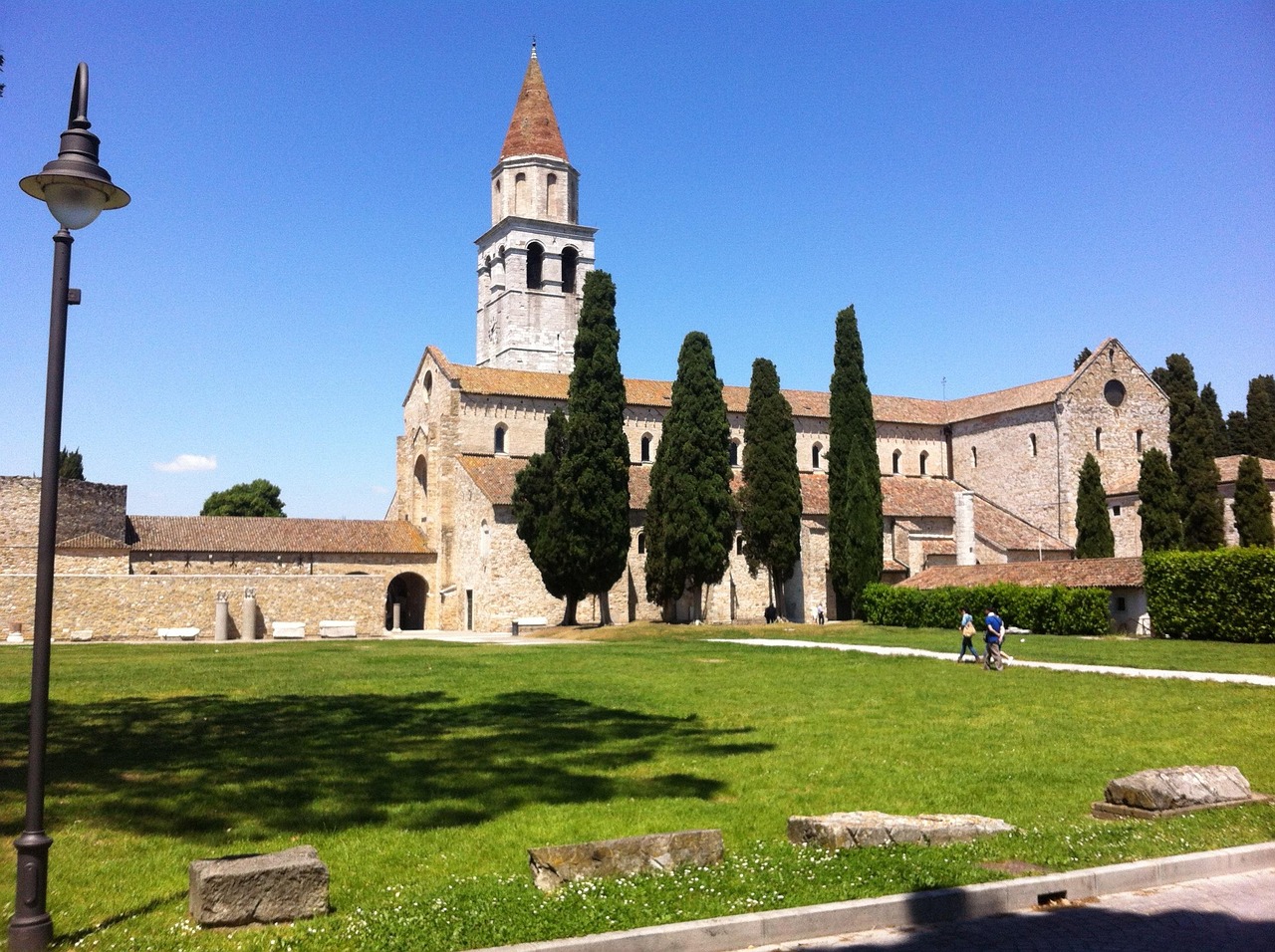Standing among the ancient stones of Aquileia, I felt like I’d stepped back in time to the height of Roman civilization. This UNESCO World Heritage site, founded in 181 BCE, once served as one of the Roman Empire’s most important cities and now offers visitors an incredible glimpse into the past.

Walking through Aquileia’s expansive ruins reveals one of Italy’s major archaeological treasures. The remnants of a thriving Roman Forum and other stunning structures tell stories of an empire’s glory days.
The archaeological area stretches before you like an open-air museum, with the Via Sacra guiding you past monuments that have survived nearly two millennia. What fascinates me most about Aquileia is how it feels both grand and intimate—less crowded than Rome but equally rich in history.
As you explore the site, you’ll discover why some historians refer to it as the “second Rome,” a testament to its former significance.
My favorite part of visiting Aquileia is wandering from the ancient Forum to the magnificent patriarchal basilica, connecting the dots of Roman life through the physical spaces they left behind. The city’s strategic importance to the empire is evident in every carefully preserved stone and mosaic.
If you’re a history lover seeking a more personal connection with ancient Rome than the tourist-packed sites of the capital can offer, Aquileia delivers that rare, authentic experience of walking in the footsteps of Romans.
History of Aquileia: The Ancient City
Aquileia’s remarkable past spans over two millennia, revealing a city that once stood as a vital crossroads of the Roman Empire. Its archaeological treasures tell the story of imperial ambition, flourishing trade, and eventual decline.
Rise to Prominence: From Founding to Flourishing Trade Center
Aquileia was founded in 181 BCE as a Roman colony with a clear strategic purpose. I was amazed to learn it was established specifically to protect Rome’s allies from barbarian invasions from the north. The city’s location was brilliantly chosen at the junction of major Roman roads, including the Via Postumia.
By 100 AD, Aquileia had transformed into a well-planned urban center. Walking through the excavated areas, I could imagine the bustling Roman Forum where citizens gathered for business and politics. The city’s river port (Porto Fluviale) became crucial to its identity as a commercial powerhouse.
Emperor Claudius and his stepson Drusus had connections to the city, contributing to its growing importance. What struck me most was how Aquileia’s position—just 10 kilometers from the sea at the edge of coastal lagoons—made it perfect for trade throughout the Mediterranean.
Decline and Rediscovery: Tales of Conquest and Excavation
Aquileia’s golden age couldn’t last forever. The city suffered devastating blows, most notably when Attila the Hun’s forces attacked in 452 CE. This marked the beginning of a long decline for what had been one of the Roman Empire’s most prosperous cities.
Over centuries, Aquileia faded from prominence, with much of its splendor buried beneath layers of earth. I was fascinated to learn how archaeologists gradually uncovered its forgotten treasures starting in the modern era.
Today, the National Archaeological Museum houses incredible artifacts that tell Aquileia’s story. When I visited, I was captivated by the spectacular Roman mosaics preserved from ancient homes and buildings—some of the finest in all of Italy.
The UNESCO World Heritage site we see today represents only a fraction of the original city. Each excavation reveals more about this once-mighty Roman center where history, trade, and culture converged at the northern frontier of an empire.
Aquileia’s Architectural Splendors
Aquileia’s ruins tell a compelling story of Roman engineering and artistic mastery. The ancient city’s structures showcase an impressive blend of functionality and beauty that has endured for centuries.
The Enigmatic Basilica: A Walk Through Religious History
When I visited the Basilica of Aquileia, I was immediately struck by its magnificent floor mosaics. Dating back to the 4th century, these colorful artworks are among the largest and best-preserved in Western Europe.
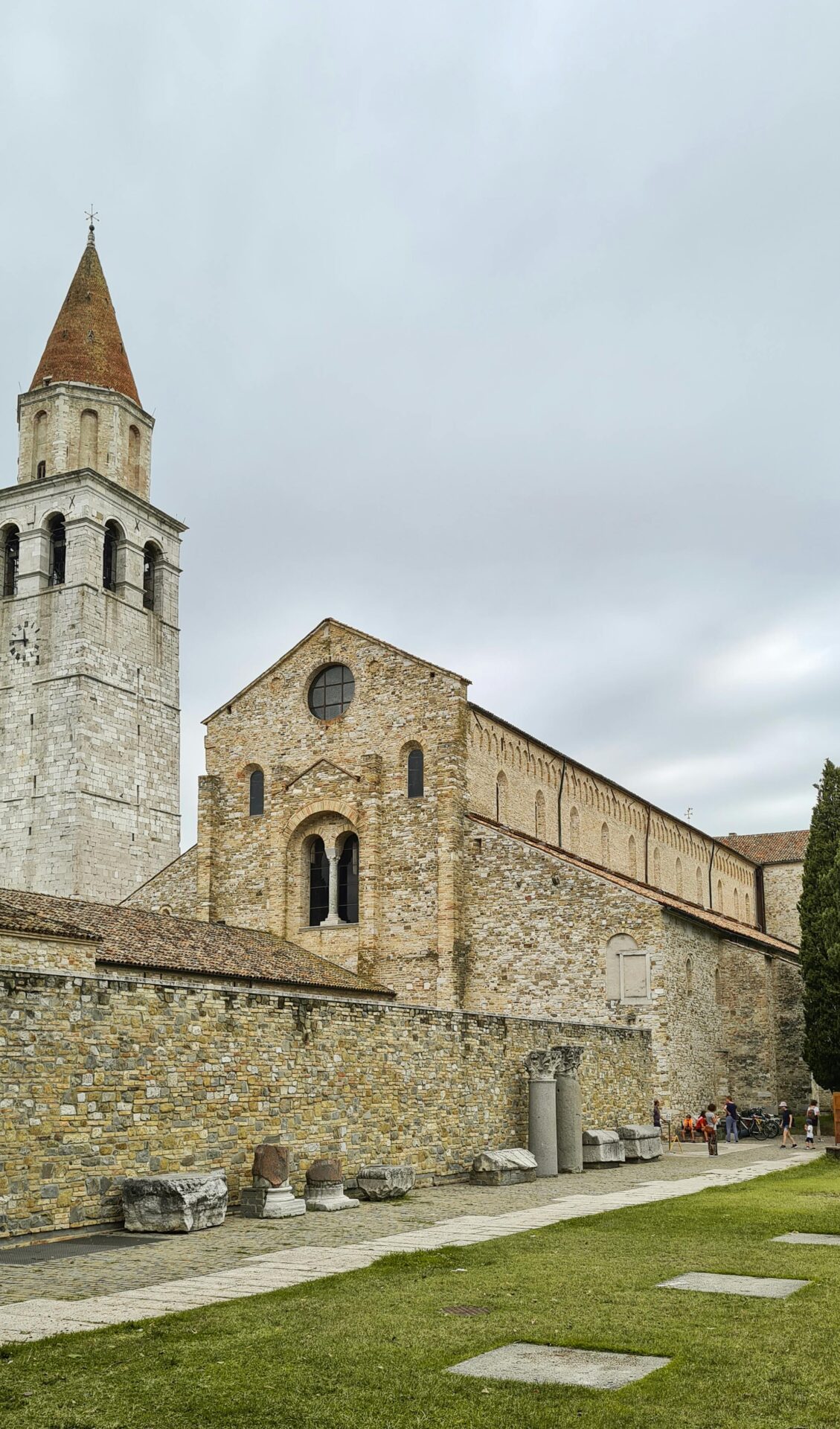
The basilica combines Roman and Byzantine influences. Its bell tower stands tall at 73 meters, offering views across the archaeological site and surrounding countryside.
Inside, I discovered layers of history. The crypt holds ancient frescoes that tell biblical stories with surprising vividness. The baptistery next door features an octagonal baptismal font typical of early Christian architecture.
What makes this church special is how it evolved through centuries while preserving elements from each period. The columns, capitals, and arches reflect different architectural styles that somehow create a harmonious whole.
Public Spaces and Private Luxuries: Forums and Palaces
The Roman Forum of Aquileia was once the beating heart of city life. Walking through these ruins, I could almost hear the echoes of ancient merchants and politicians.
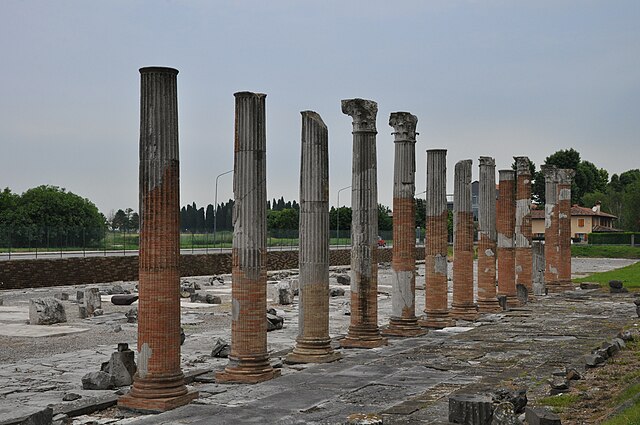
Image source: Wikimedia Commons
The forum featured:
- A central square for public gatherings
- Government buildings along the perimeter
- Shops and markets for commerce
- Religious temples dedicated to Roman gods
Nearby, I explored remains of wealthy private homes with intricate mosaic floors depicting mythological scenes and everyday life. These domus belonged to Aquileia’s elite, featuring inner courtyards, dining rooms, and private baths.
The river port structures reveal how this city thrived as a trading center. Stone quays and warehouses once bustled with activity as goods from across the empire flowed through Aquileia.
What impressed me most were the engineering achievements—advanced water systems, heating technology, and construction techniques that have withstood two millennia.
The Roman Forum and Beyond: Civic Life in Ancient Aquileia
Walking through Aquileia’s ancient streets, I felt transported back to a thriving Roman metropolis where civic life buzzed with activity. The Forum served as the beating heart of this powerful city, surrounded by temples, administrative buildings, and bustling markets.
Business and Politics: The Heart of Roman Urban Planning
The Roman Forum in Aquileia was truly the center of everything important. As I explored the expansive ruins, I noticed how the space was thoughtfully designed to serve both political and commercial functions.
Unlike Rome’s famous Forum, Aquileia’s version had its own distinct character. Local merchants displayed their wares in market stalls while important civic decisions happened just steps away in the basilica and curia buildings.
What impressed me most was how the Forum reflected Aquileia’s strategic importance. Founded in 181 BCE, the city’s location made it vital for trade between the Mediterranean and northern Europe. The grand administrative buildings that line the Forum’s edges demonstrate how seriously Romans took their governance here.
Amphitheaters to Baths: The Cultural Hotspots of the City
Beyond the Forum, Aquileia offered residents an impressive range of cultural and leisure spaces. Though not as massive as Rome’s Colosseum, Aquileia’s amphitheater hosted gladiatorial contests and theatrical performances that united the community.
The public baths were perhaps my favorite discovery. These weren’t just places to get clean – they functioned as social clubs where citizens exchanged news and ideas. The intricate mosaics that once decorated these spaces hint at the city’s wealth and artistic sophistication.
Religious life thrived alongside entertainment. The temples scattered throughout Aquileia show how traditional Roman worship evolved as Christianity began to spread. This religious transition is especially visible in the magnificent paleochristian basilica that still stands today.
Walking the Ancient Streets: Daily Life and Public Works
As I wander through Aquileia’s ancient thoroughfares, I’m struck by how the city’s layout reveals the sophisticated daily life of Romans. The carefully planned streets and impressive public works showcase both practicality and engineering genius that has lasted millennia.
From Markets to Homes: Glimpses into the Everyday
The marketplace buzzes in my imagination as I walk through what was once Aquileia’s forum. Merchants would have displayed goods from across the empire here, showcasing the city’s importance as a trading hub.
Homes of wealthy Romans featured intricate mosaic floors, some of which you can still admire today. The famous “Great Mosaic” spans over 760 square meters and offers glimpses into the lives of the elite.
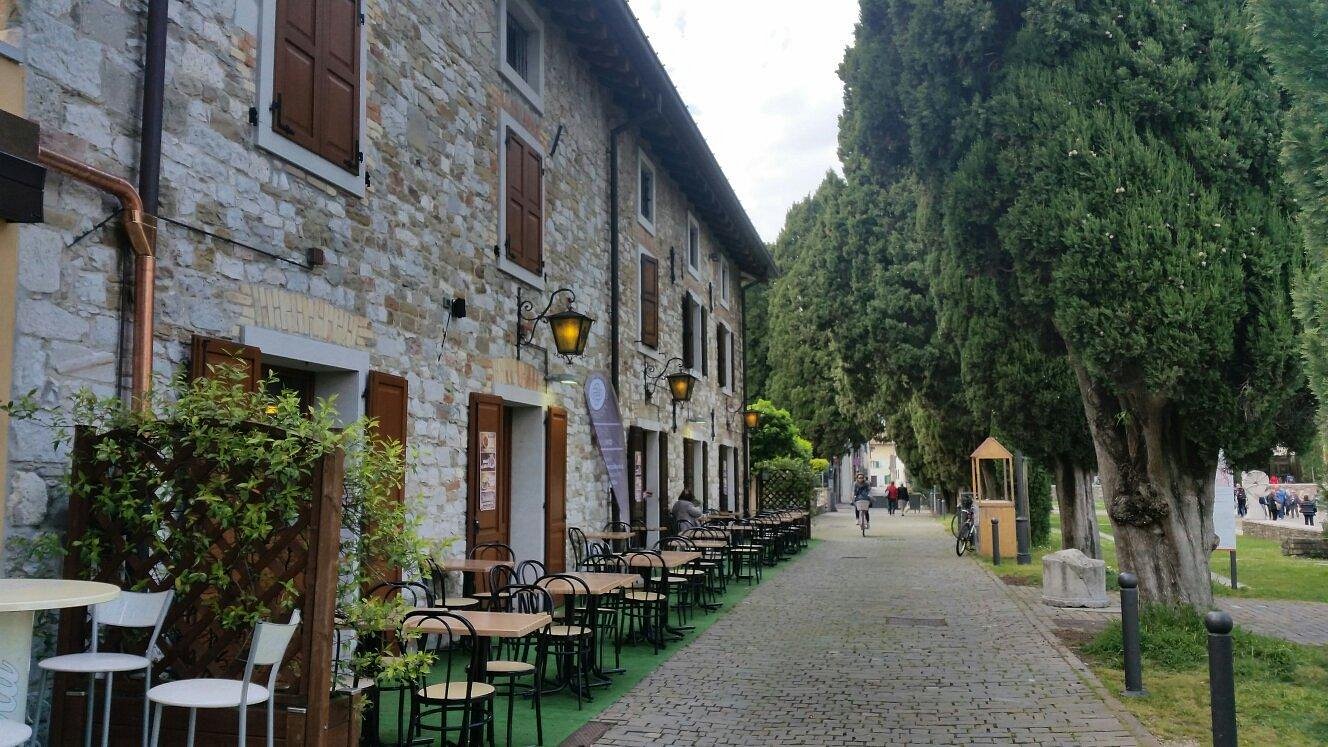
Image source: Tripadvisor
I notice how the houses were designed with a central courtyard, allowing fresh air and light into the home. Smaller dwellings lined the side streets, housing craftspeople and merchants who kept the city’s economy thriving.
Infrastructure and Ingenuity: A Look at Roads and City Walls
The Romans were master builders, and Aquileia’s infrastructure proves this point beautifully. The roads here connected to the broader network, including the famous Appian Way, showcasing Rome’s genius for creating highways that linked their vast empire.
I’m impressed by the durability of these stone-paved streets. They feature slightly raised sidewalks and clever drainage systems that prevented flooding during heavy rains.
The city walls of Aquileia stand as a testament to Roman defensive engineering. Originally spanning about 3 kilometers, these fortifications protected this valuable port city from invaders.
Walking along these ancient barriers, I can almost hear the footsteps of Roman soldiers on patrol. The walls incorporated watchtowers and multiple gates, strategically positioned to control access while facilitating trade.
Journey Beyond Aquileia: Exploring the Surrounding Wonders
While Aquileia itself offers incredible archaeological treasures, the surrounding region holds remarkable destinations that complement your historical journey. The neighboring areas showcase Northern Italy’s diverse beauty, from bustling cities to peaceful natural settings.
Veneto and Udine: The Allure of Northern Italy
I recommend spending at least a day in Udine, just 30 minutes from Aquileia. This charming city features stunning Venetian-style architecture and Tiepolo’s magnificent frescoes in the Archbishop’s Palace.
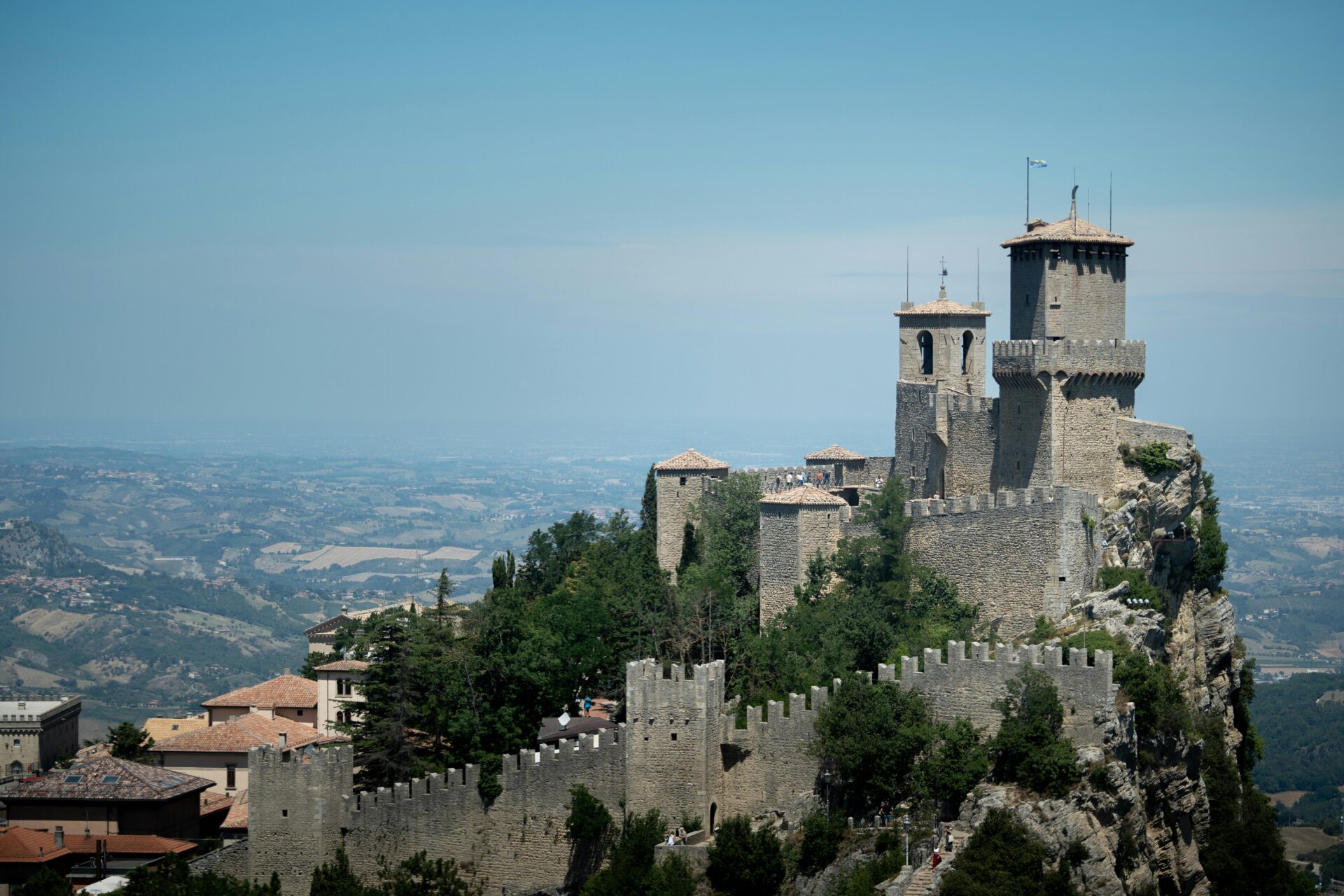
Venice itself is only a 1.5-hour drive away. I was amazed by how the grandeur of Venice connects historically to Aquileia through ancient trade routes and shared cultural influences.
Other nearby gems include Trieste with its impressive Miramare Castle, and Grado—often called “Little Venice”—with beautiful beaches and a historic center. Each city offers its own unique flavor of Northern Italian culture.

The Friuli-Venezia Giulia region surrounding Aquileia boasts charming medieval villages like Cividale del Friuli, where you can walk across the stunning Devil’s Bridge.
Nature Reserves and Culinary Delights: Immersing in Local Traditions
The Isonzo River Nature Reserve near Aquileia provides a peaceful retreat after days of archaeological exploration. I spent a wonderful morning hiking trails that wind through lush wetlands teeming with bird species.
The Marano Lagoon offers boat tours where you can spot unique flora and fauna. These natural spaces reveal how the landscape shaped ancient Roman settlement patterns.
Local cuisine here is a delicious blend of Italian, Slavic, and Austrian influences. Don’t miss trying:
- Frico: A crispy cheese dish that’s a regional specialty
- San Daniele prosciutto: Arguably better than its more famous Parma cousin
- Friulian wines: Especially the crisp, mineral-rich whites like Friulano

I found many family-run agriturismi (farm stays) in the countryside. You can sample authentic dishes made with ingredients grown on-site. The osmizze—temporary taverns opened by local winemakers—offer a truly authentic experience.

